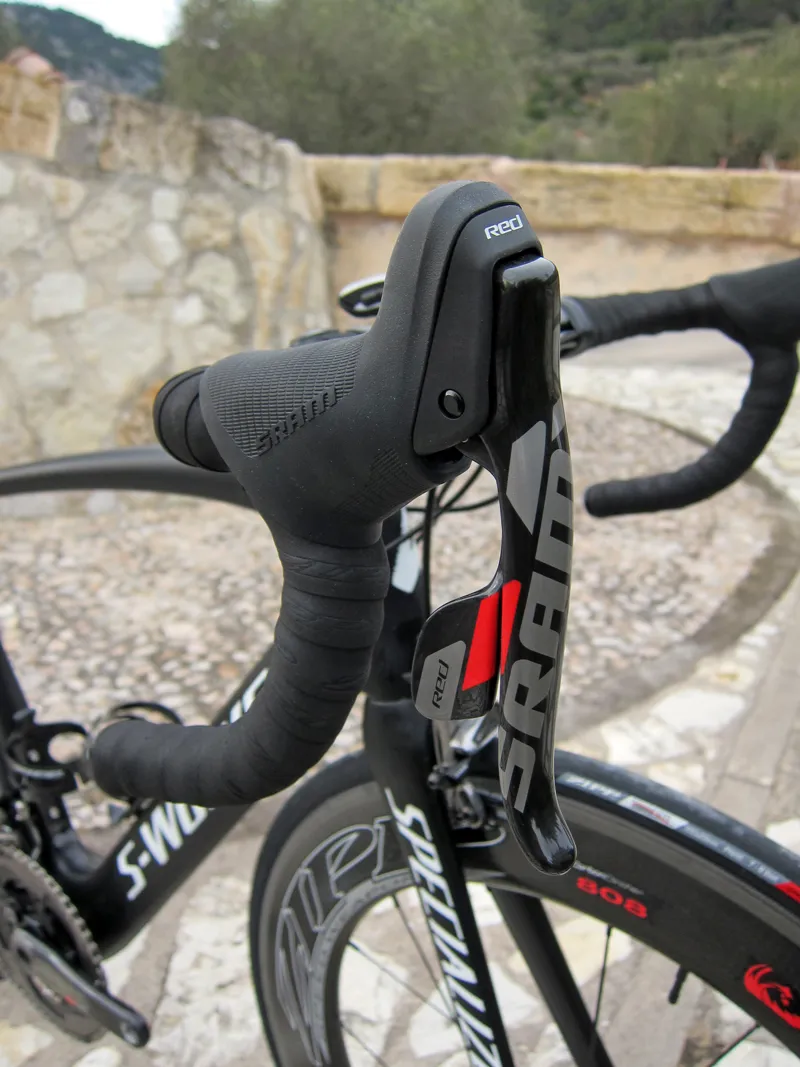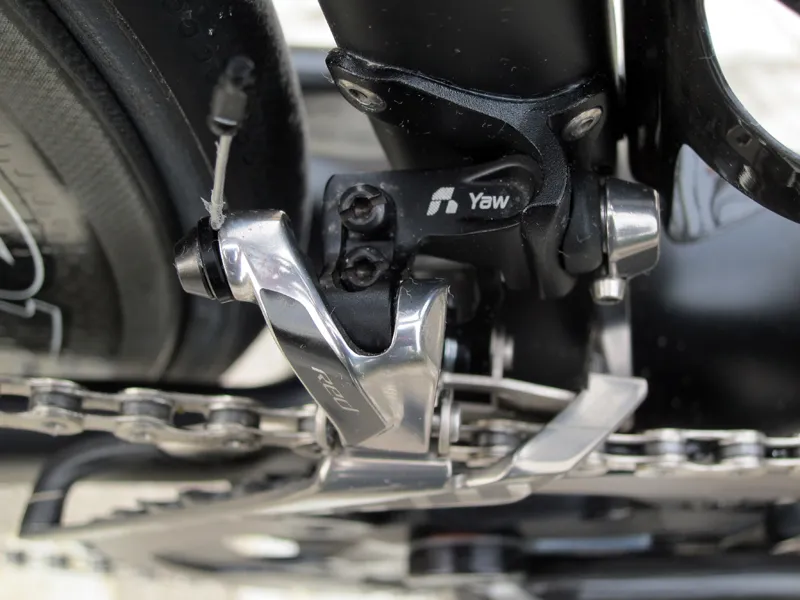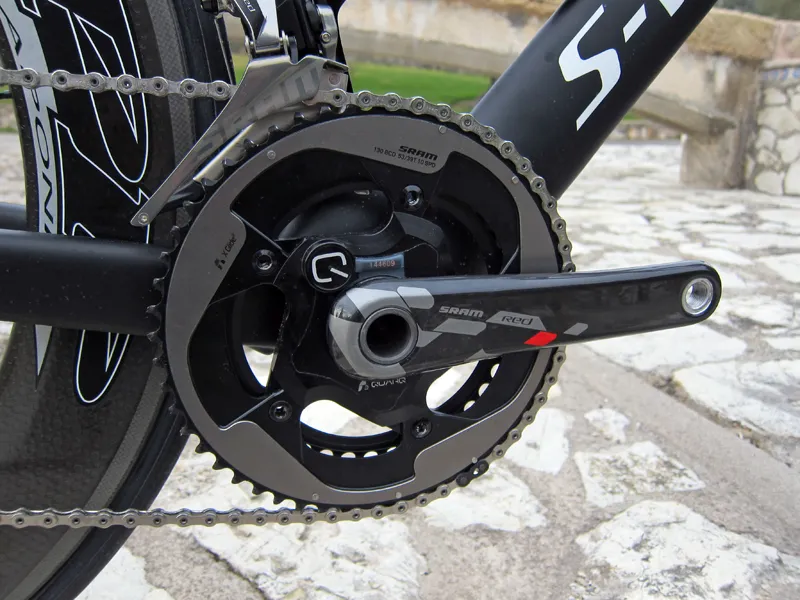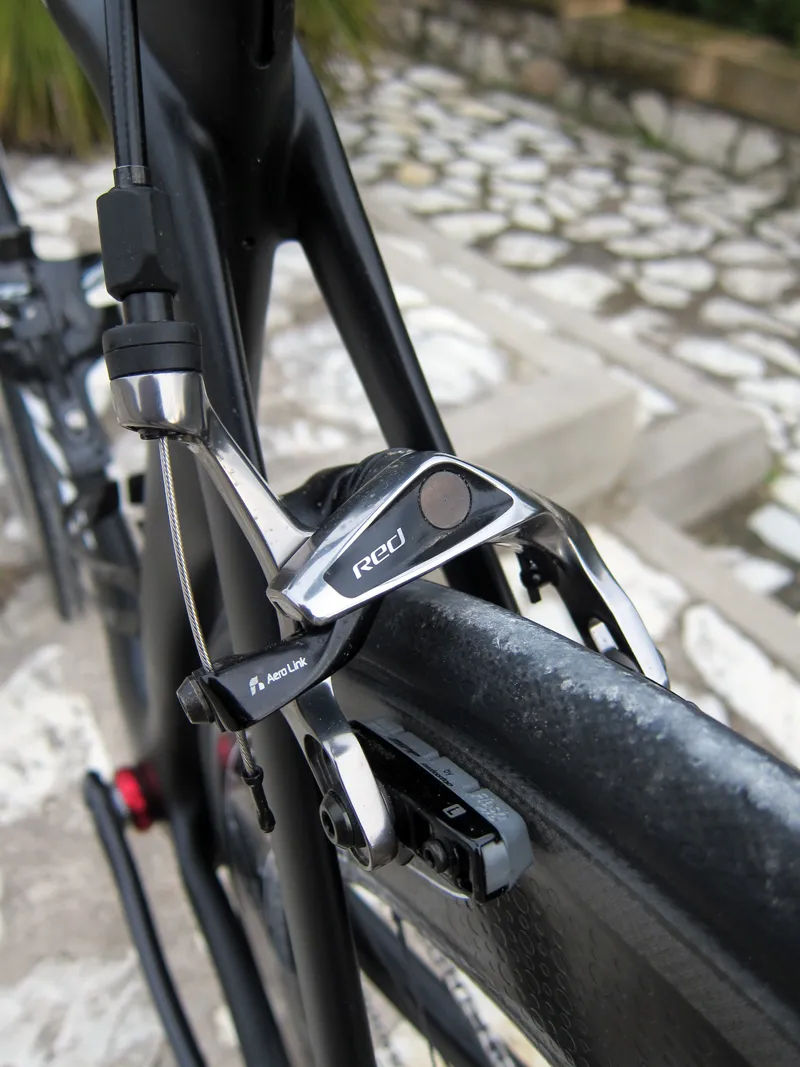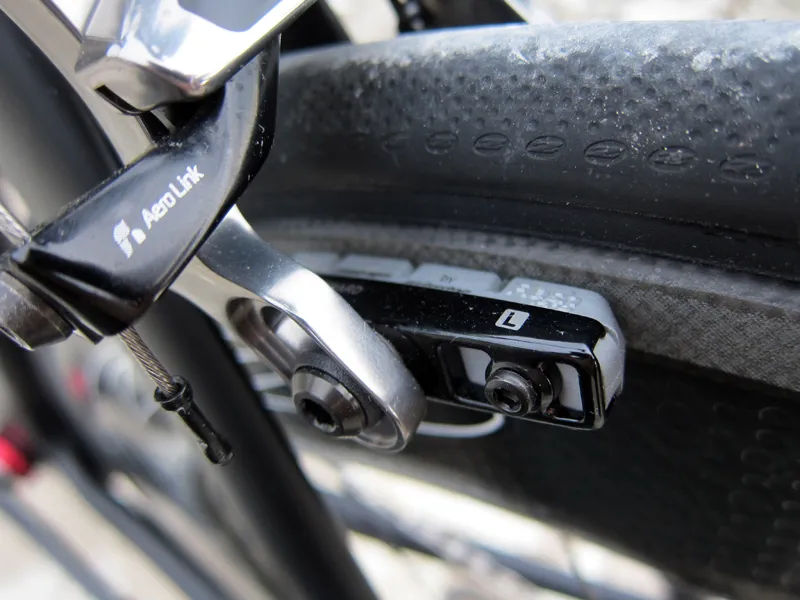A few years of experience – six years since the original Force, more than four since the first Red – have done the new 2013 SRAM Red group, unveiled yesterday, a lot of good. Not only does it shift and brake better than the previous version, it's also 150g lighter, more refined in its feel and operation, and more mature in its presentation. We've only managed a few hours on the new kit thus far but it's already leaving a positive impression.
Lay your hands on me
The first thing you notice about the revamped SRAM Red group when you swing a leg over the saddle is the new lever shape. Sort of a blend of old Red and Shimano Dura-Ace Di2 with a little bit of Campagnolo tossed in for good measure, the smaller but still tapered bodies are easier to firmly wrap your fingers around and the extra room on the bottom means riders with large hands no longer have to compromise their grip.
The smoother edges – particularly the upper, outer one – also more evenly distribute pressure on your palms for better comfort during long days on the road. Especially when combined with the fantastic new textured hood surfaces, the bigger bump up front now more firmly locks the base of your thumb in place, even on bumpy roads. When it's time to get stretched out and aero, that same bump also feels more substantial and secure in the recesses of your palms.
Unable to load media
Video: SRAM Red 2013 in action
Riders who run their levers high on the bars – as is becoming increasingly common – will appreciate the slightly longer brake lever blades, too, as they're easier to reach from the drops without having to hook your fingers skyward. SRAM say the shift paddle is a touch bigger as well, though it's not a particularly noticeable difference. The old Red's paddle was already very easy to access from either the hoods or the drops and the new version is no different.
The overall shift action hasn't changed much, either. While many aspects of the new Red group are more refined, the DoubleTap mechanism is still decidedly raw, possessing neither the ultra-light action of Shimano nor the muted clicks of Campagnolo mechanical levers. Instead, the Red paddles are still relatively stiffly sprung with extremely short throws and the detents are easily heard and felt through your hands. Like it or not, SRAM have earned their reputation partially based on that highly tactile feedback and riders shouldn't expect a move away from that any time soon.
Front shifting brought up to speed, quieter running overall
What happens when you actuate those shift levers, however, is a big improvement over earlier SRAM road transmissions, particularly up front. The combination of the stouter new chainrings, pin and ramp designs borrowed from SRAM's XX mountain bike group, and the awesome new front derailleur with its stiffer steel-and-aluminum cage yield what is far and away the best front road shifting to come out of the Chicago company. Even when cranking out of the saddle uphill and at a low cadence, the chain faithfully and smoothly moves from chainring to chainring.
It's still not quite on par with Shimano Dura-Ace and its brilliant hollow outer chainring advantage but it's not too far off the mark – and if anything, Red now seems poised to give Campagnolo's mechanical front shifting a run for its money. New Red may be lighter in total than old Red but the front derailleur and chainrings have actually gained weight – grams very well spent, if you ask us.

The new front derailleur is a major improvement over the old titanium-caged version. The steel and aluminum cage is much stiffer than before and more effective at moving the chain back and forth under high pedal loads
Impressively, that trick Yaw feature with its non-parallel pivots genuinely works as advertised, too. We made sure to spend appreciable amounts of time in every possible gear combination and there's simply no cage rub up front and no trim needed. Even better, since SRAM have cleverly tackled that issue by selectively angling the cage itself, the engineers didn't have to artificially widen the cage plate spacing (thus sacrificing shift performance) to scuttle the rub.
Changes to rear shift performance are more subdued. While the cassette itself is thoroughly updated, the tooth profiles and shift gates haven't changed much. Movement from cog to cog is positive and deliberate but still not quite as slick or smooth as Shimano. Shifts to smaller-diameter cogs are a bit quieter and less violent than before, though, thanks to those StealthRing elastomer landing pads stretched around the troughs and the newly open aluminum backing plate.
Seriously, we were as skeptical as anyone that a bunch of little rubber rings could actually make a difference but they do. Add in the slightly quieter rear derailleur pulleys – whose new shape will make its way into other SRAM road groups as a running change – and the whole drivetrain is notably less noisy than it used to be. Unfortunately, those noise-reducing rings on the cassette will also continue to preclude the use of a Red cassette for cyclo-cross – there's simply nowhere for mud to go.

Overall rear shift performance on the new SRAM Red is essentially identical to the old one. Upshifts are slightly quieter and less violent, though, and general drivetrain noise is reduced, too
Smaller and lighter brake calipers but better lever feel and more power
The new cam-enhanced, single-pivot brake calipers genuinely surprised us. As compared to the current Red's conventional dual-pivot brakes, the new pivots have substantially less friction for a lighter lever feel, the deep cross-sections squelch flex under hard braking for more positive and directly modulation, and the variable ratio cam provides lots of rim clearance.
More importantly, the new calipers generate a lot of easily controllable power with excellent lever feedback. We only tackled one real descent during our initial test ride but it was rife with tight switchbacks and we found ourselves diving deeper and braking harder and later with every one, fully confident that we weren't going to lock up a wheel or overcook the corner – not bad for all-aluminum calipers that now weigh just 240g a pair.
While the new Red brakes easily handle modern wide-profile rims (we set out on Zipp 303 Firecrest carbon clinchers), we're still curious to see how they match up with standard-width hoops. The cam mechanism likely produces a more variable leverage ratio through its stroke than Shimano's impressively linear Dura-Ace calipers so it'll be interesting to see how that power curve varies deeper into the stroke.
We found pad positioning to be critical to the new brakes' overall performance and feel. Minor variances in pad contact relative to the rim and even slight maladjustments in centering position generated a mushier lever than we'd have expected with a conventional dual-pivot caliper.
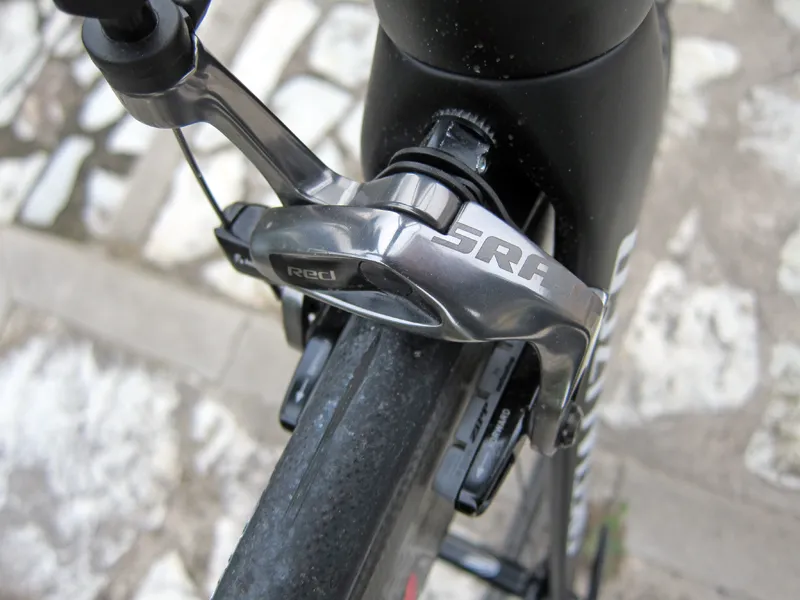
The deeper cross-section and more compact design contribute to a more positive feel at the lever, especially under hard braking
We're also not entirely sold on the new quick-release mechanism, which is integrated into the base of the barrel adjuster. SRAM are quick to point out the trimmer frontal profile relative to the old Red's conventional cam (seriously) but it looks disappointingly cheap and clumsy compared to the highly polished two-tone forged aluminum of the rest of the caliper.
Now more redder than ever
Weight weenies will rejoice in the ultralight weight but the story goes much deeper than that – at least on first impressions, the new Red group seems to work better than the old one in nearly every way. Had SRAM managed to do that with no weight savings at all it would still be worthy of praise so consider the lost grams an added bonus.
We'll have a production group in our hands for a proper long-term review shortly so we'll see how the new SRAM flagship holds up with more use and abuse – in particular the bottom bracket and derailleur pulley bearings, though in the former case it's a carryover design and we've had good luck with the latest Gutter seal-equipped models. Consumers will get their chance soon enough, too – aftermarket delivery is set for 1 March.
Just one question remains: is it SRAM Red 2012 or 2013? The new group is officially a model year 2013 product but because it's going to be available so early this year, even SRAM themselves have been referring to it as 2012. We're going with 2013 for now.

Our test rig for our initial ride on the new SRAM Red was an HTC team-issued Specialized S-Works Venge


